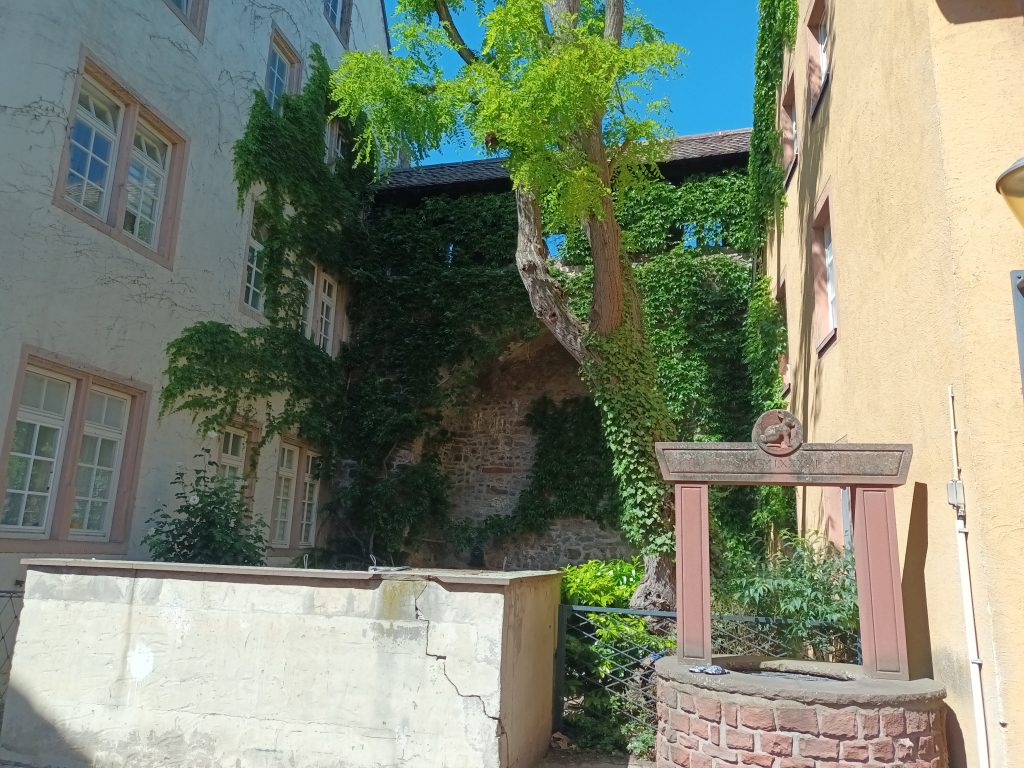As the cultural and municipal services proudly point out, Worms has long been a central city for many religious movements. Thus, within a small area in the heart of its old town, you will find the impressive cathedral, churches, as well as the municipal buildings and the old Jewish quarter with its museum and synagogue.
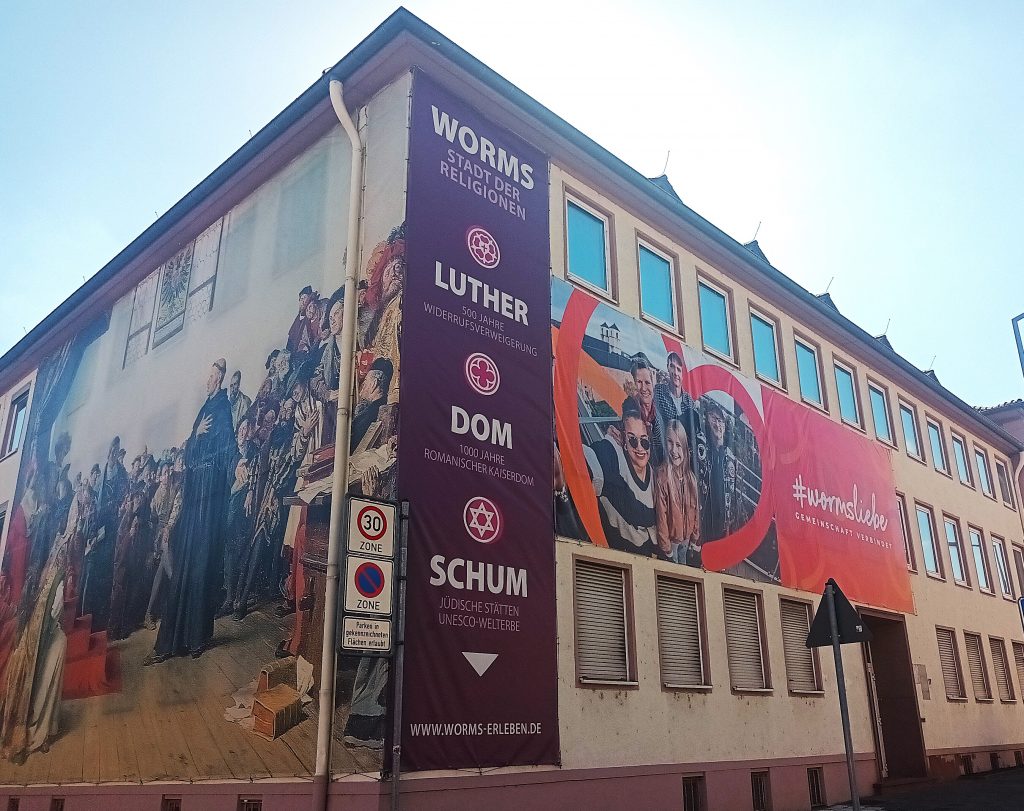
History
The Jewish presence in Worms dates back to the mid-10th century. They were mainly merchants and lived on what is now the Judengasse, meaning ‘Jewish street’.
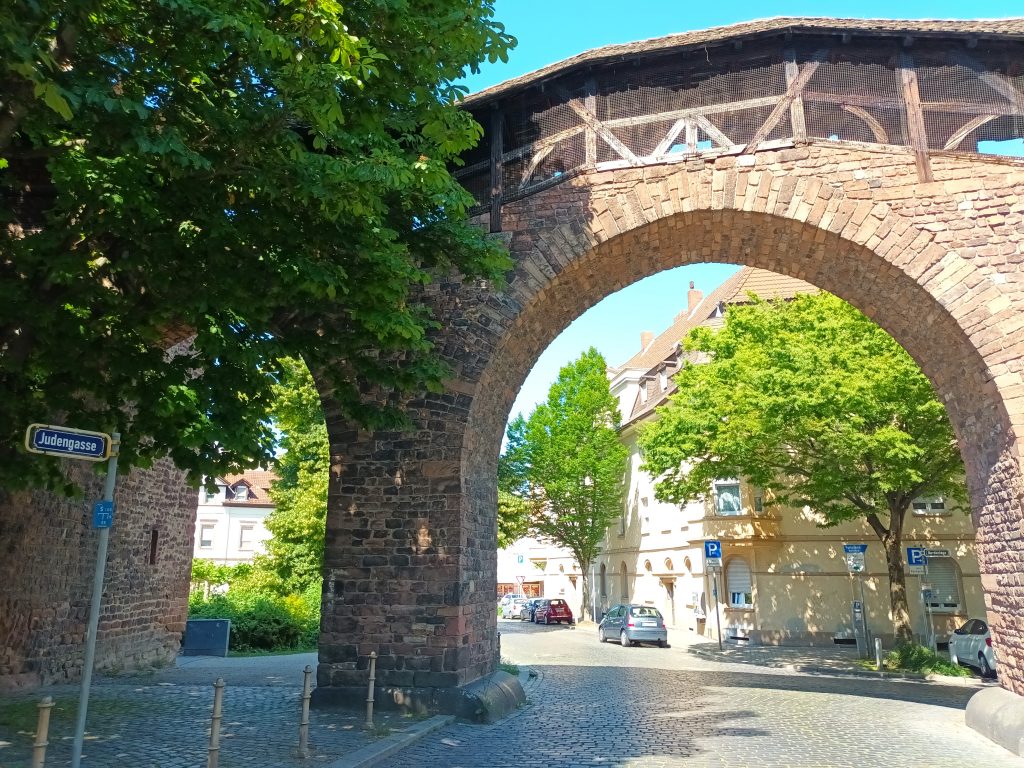
Near the city walls, the first synagogue in Worms was built in 1034, thanks to a donation from Jacob and Rachel Ben David. This made it easier to welcome great European scholars, and Worms became, like the other cities of the SChum, famous for its yeshivot and illustrious students and teachers, including Rashi.
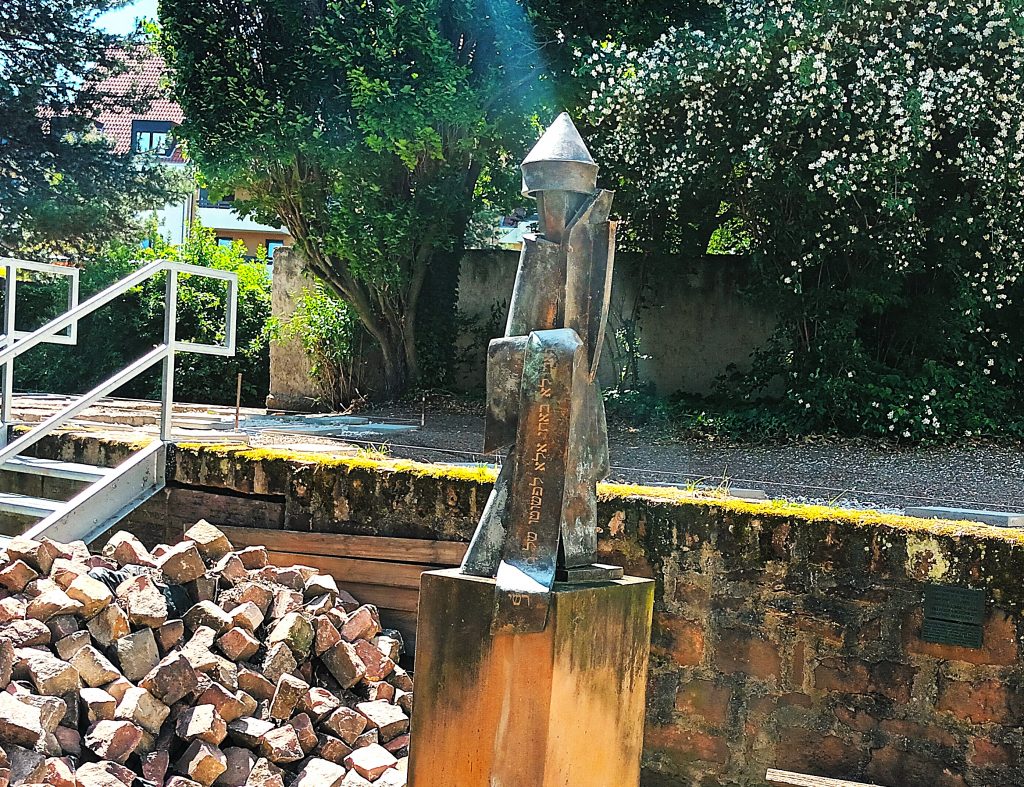
It was during this same period that the Jews obtained land at the other end of the city to establish a cemetery. Burials took place there uninterruptedly until 1911.
The mikveh probably dates from the end of the 12th century. Built by the community thanks to donations from a certain Joseph, it was dug 7 metres deep to reach the spring water. It included a room for changing and another for cleaning before immersing oneself in the mikveh water.
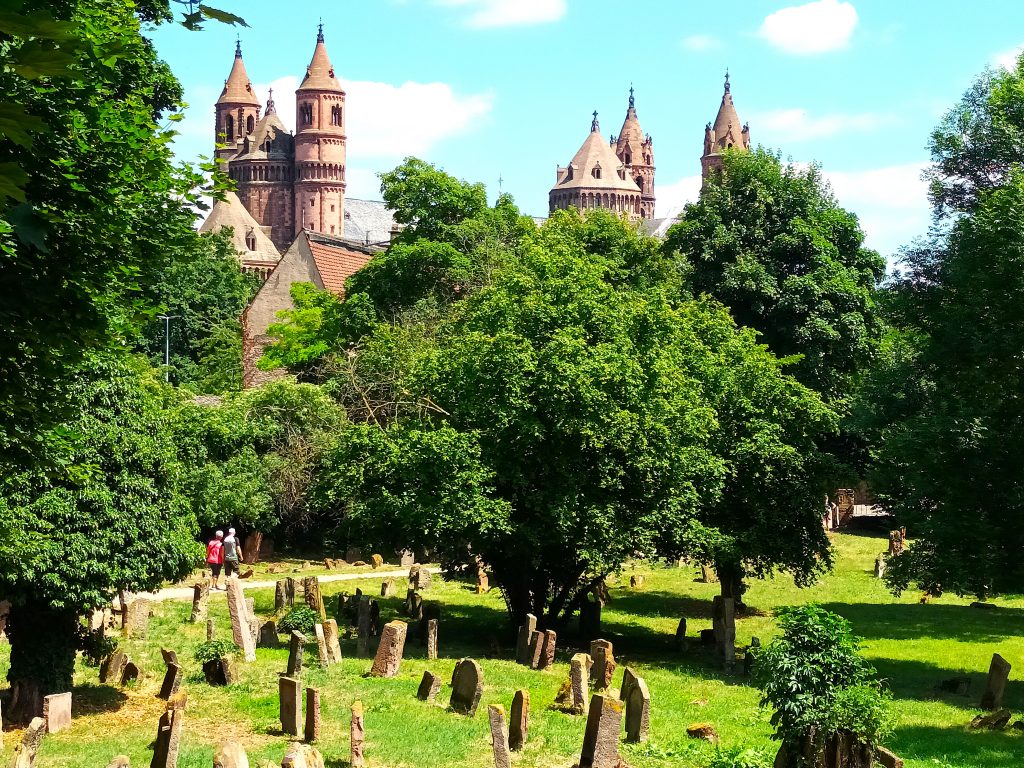
The synagogue had to be rebuilt following the destruction caused during the Crusades of 1096 and 1146. It was reopened in 1175. Meir and Judith bar Joel made a donation in 1212 to build a prayer room for women, adjacent to the men’s room. Built in the same spirit as in Speyer, the Frauenschul was connected to the men’s hall by a door and five small windows that allowed the women to hear the prayers. It was not until the 19th century that this space was opened up to allow women to participate more fully in the prayers.
During the persecutions of 1349, the year of the Black Death, more than 400 Jews were murdered, the Judengasse was destroyed, and their property was looted. The synagogue was rebuilt in Gothic style. From that moment on, the Jewish community of Worms suffered an irreparable decline, particularly in terms of intellectual and religious production.
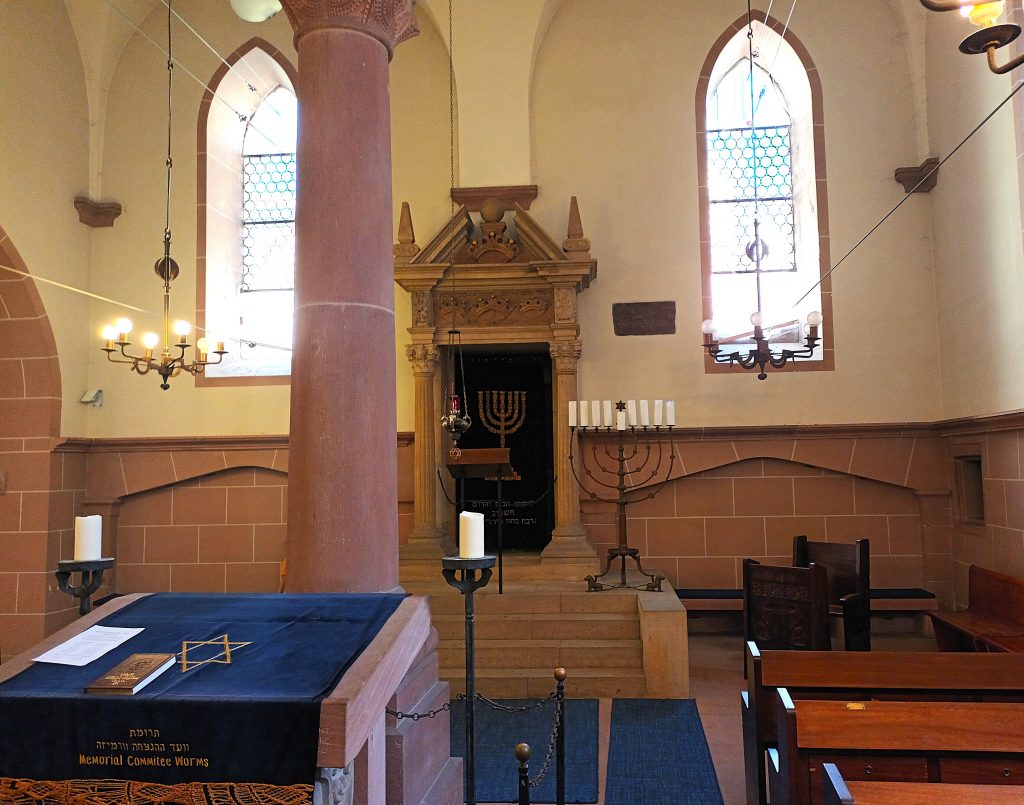
At the end of the 14th century, just under 200 Jews lived on Judengasse. A few students joined them, and by 1500 the Jewish community numbered around 250.
Forced to live in the ghetto, the number of Jews nevertheless increased thanks to the support of Emperor Ferdinand I (1503-1564), who prevented the municipality from expelling them. Thus, from the end of the 16th century to the end of the 18th century, between 500 and 700 Jews lived on Judengasse. However, Louis XIV’s troops destroyed the city in 1689 during the War of the Palatinate Succession, including its Jewish quarter.
As in various other European cities conquered by French troops in the early nineteenth century, Jews were granted the same rights as their fellow citizens. With this equality finally achieved, Jews contributed greatly to the economic, intellectual and political development of Worms. Proof of this successful integration, Ferdinand Eberstadt (the son of a family established in Worms since the 17th century) was even mayor of Worms from 1849 to 1852.

The intellectual momentum of the 19th century also encouraged changes within the Jewish community. The Levi Synagogue was built in 1875, opposite the other synagogue, following rich but tense debates between traditionalists and liberals. It was named in honour of its founder, Leopold Levy.
The Jewish community in Worms had 1,000 members in 1933. On 3 June 1934, the synagogue celebrated its 900th anniversary, despite fears about the Nazi takeover.
During Kristallnacht on 9-10 November 1938, the old synagogue in Worms was destroyed once again. The Levy Synagogue was severely damaged that night and suffered further damage during an Allied bombing raid on the city in 1945. Only a few walls remained standing, to such an extent that in 1947 there was no option but to demolish it.
In March 1942, 75 Jews were rounded up and sent to Sobibor and Belzec. In September 1942, another 93 were sent to Theresienstadt and five to Treblinka. In total, 460 Jews from Worms were murdered during the Holocaust.
The synagogue was rebuilt between 1959 and 1961. The project was made possible thanks to the support of Jews who had managed to flee during the war, as well as the current communities of Mainz and Worms, the city of Worms, the state of Rhineland-Palatinate and the Federal Republic of Germany.

Behind this synagogue is a place of study known as the Yeshiva Rachi, named after the great exegete who studied in Worms. Since 1982, this building has housed the Jewish Museum of Worms, but it is not the first of its kind. The first Jewish museum in Worms dates back to 1924. It was the work of Isidor Kiefer (1871-1961), an active member of the Jewish community in Worms. He went into exile in the United States in 1933 after the Nazis came to power. During Kristallnacht, the museum was destroyed in the pogrom. Only a few rare pieces from the museum were saved.
The dozen or so Jews living in Worms today are connected to the community life in Mainz.
Itinerary
Leaving Worms station, turn right onto Bahnhofstrasse and follow the street to the end.
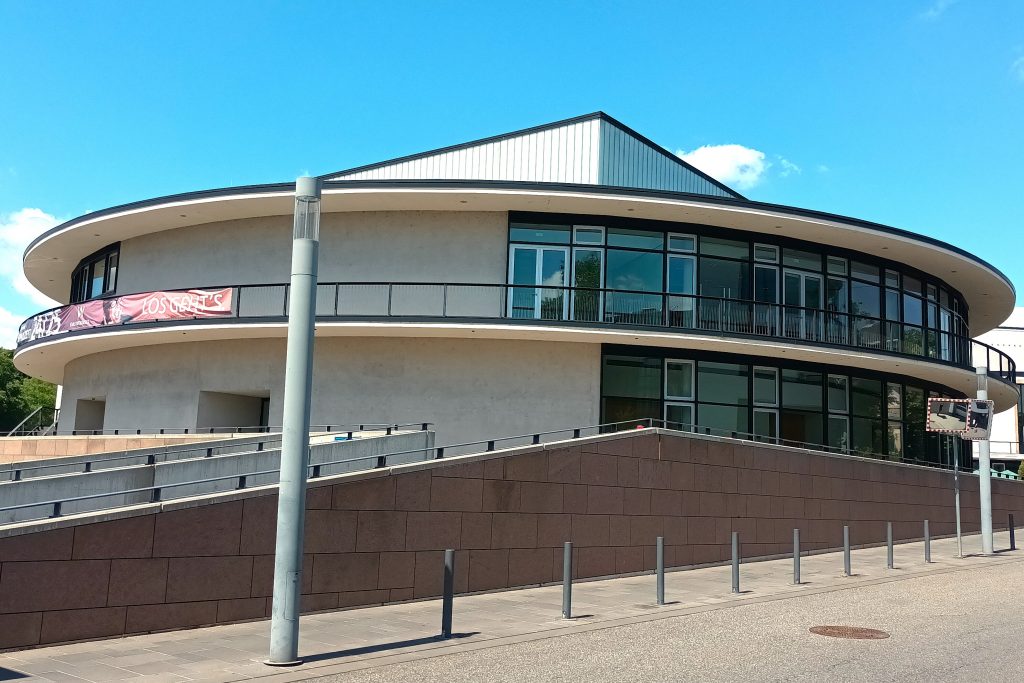
Opposite the theatre, which hosts many cultural events, turn left to reach the old Jewish cemetery in Worms.

The cemetery consists of several sections, the main one at the entrance and the others overlooking it, which were built when the cemetery was enlarged.
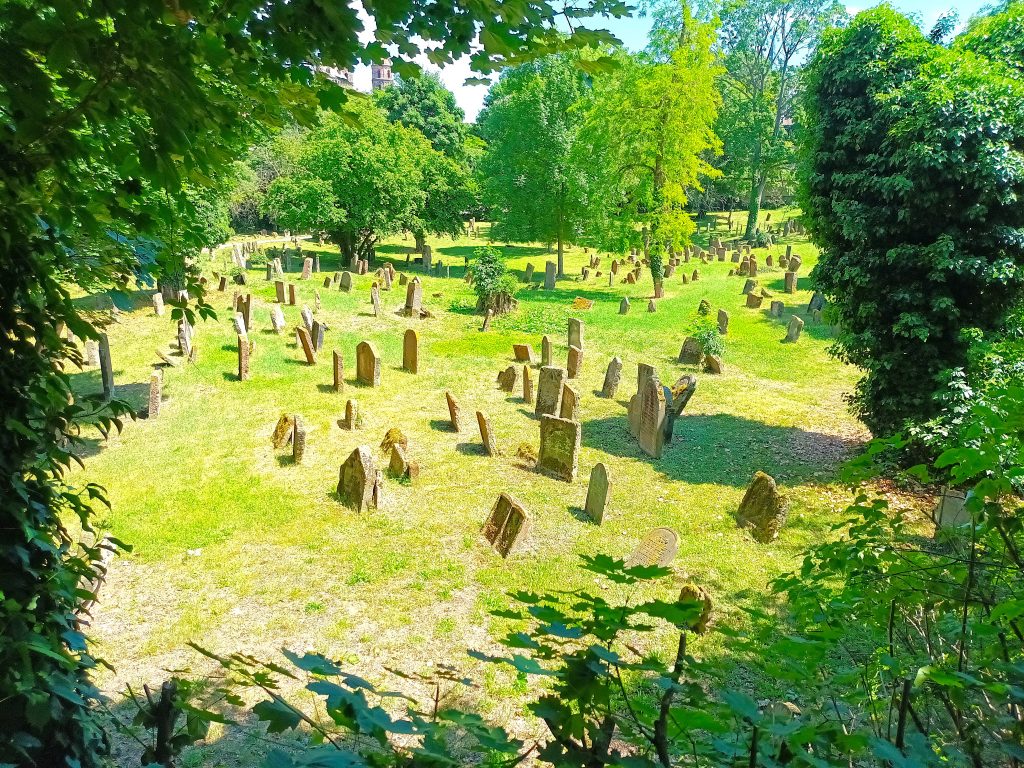
The Jewish cemetery of Worms is probably the oldest in Europe. Dating back to the 11th century, 836 graves have been recorded. Some are very ancient and others more recent, which can be seen on the small path above leading to the different sections.
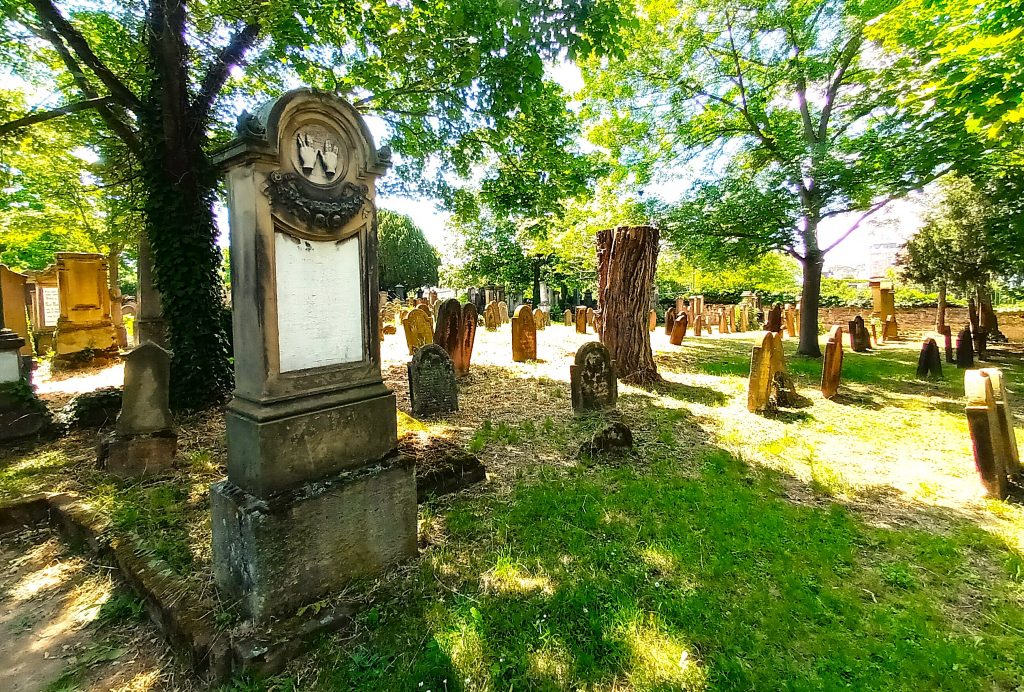
After this visit, head back up towards the old town along the ramparts. You will come to numerous religious buildings, including the cathedral and churches of different denominations.
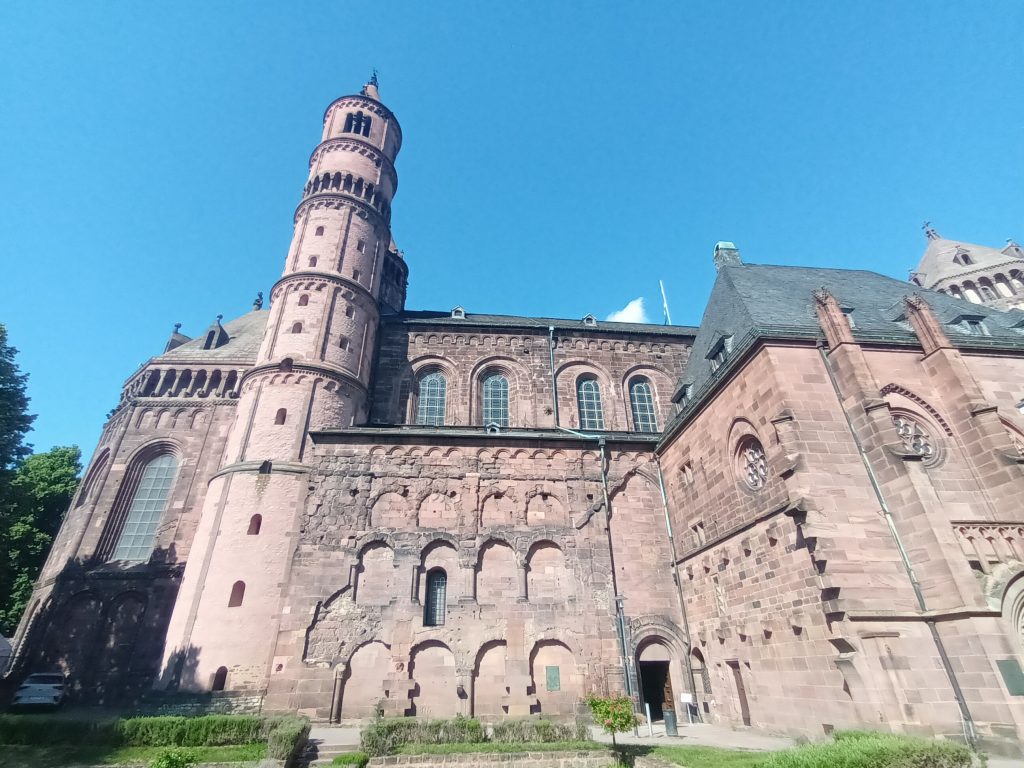
To reach the Judengasse, you cross the shopping street Kämmererstrasse, lined with fountains: the Siegfriedbrunnen (in honour of Siegfried, hero of Norse mythology),
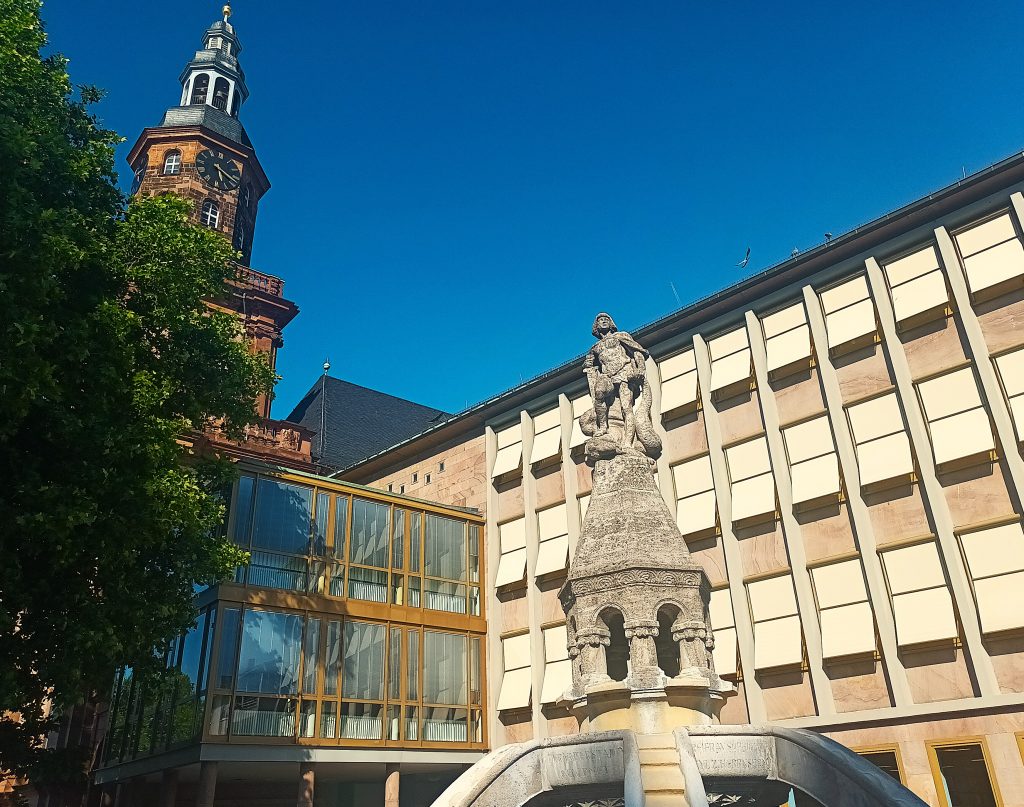
the Winzerbrunnen (the Winegrowers’ Fountain pays tribute to the local wine culture and historical figures associated with viticulture)
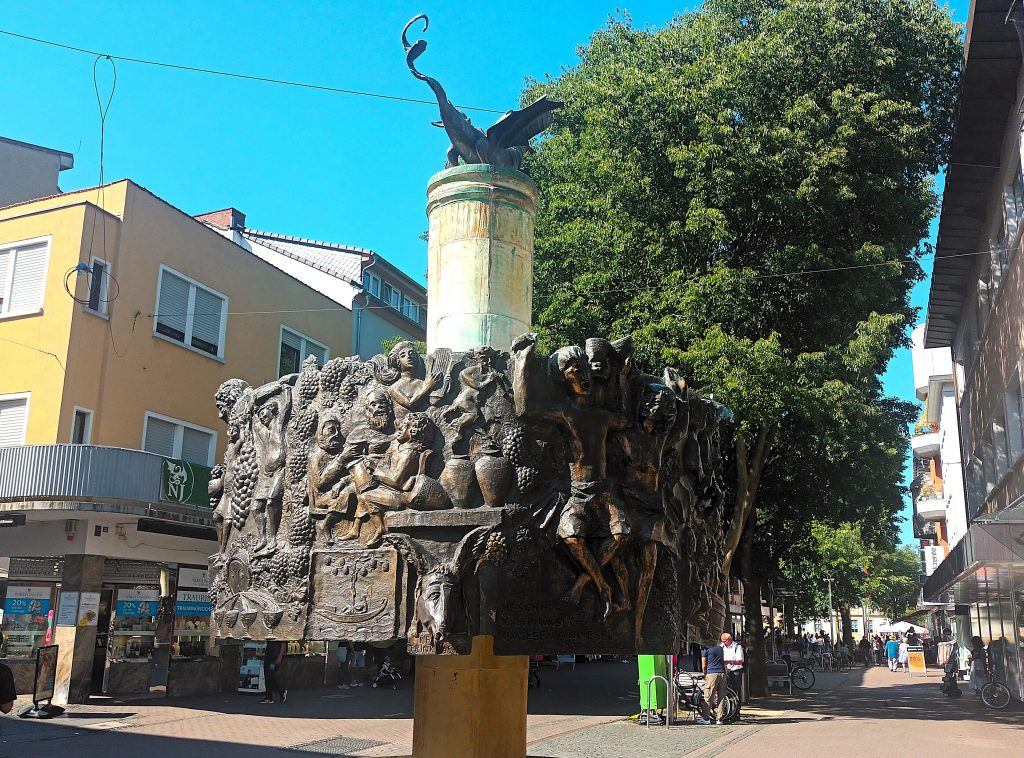
and finally, the Ludwigsbrunnen (in honour of Grand Duke Louis IV of Hesse and the Rhine), on the square of the same name, celebrating the city of Worms.
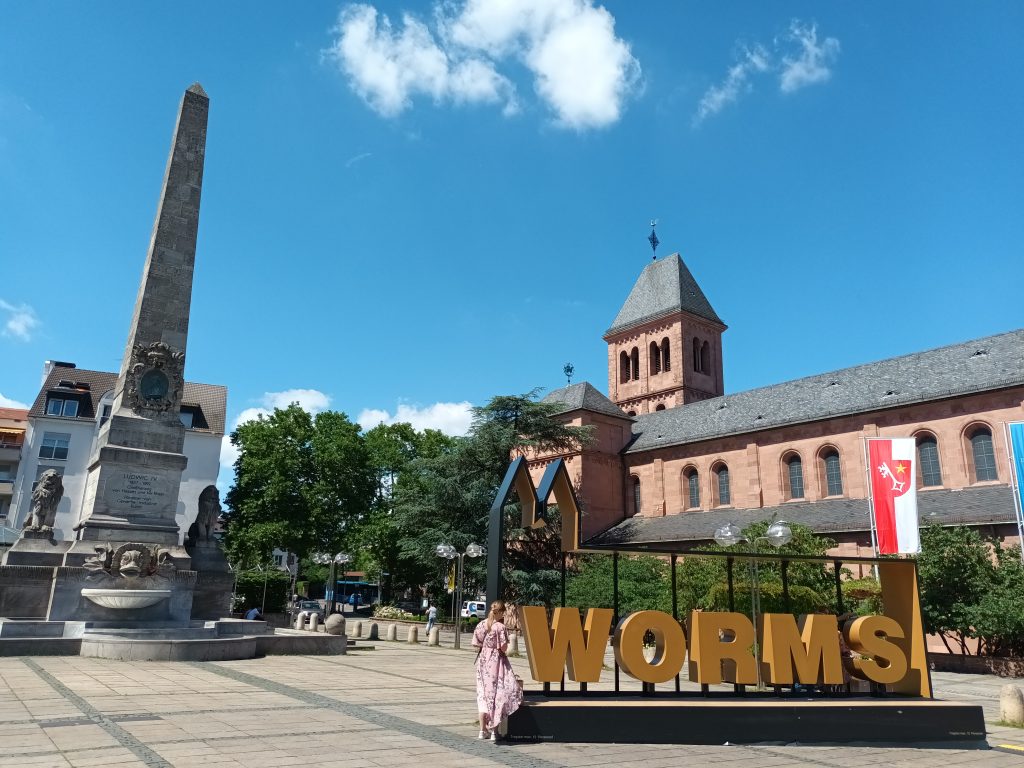
At the end of this street, arriving at the Martinspforte, turn right into Judengasse.
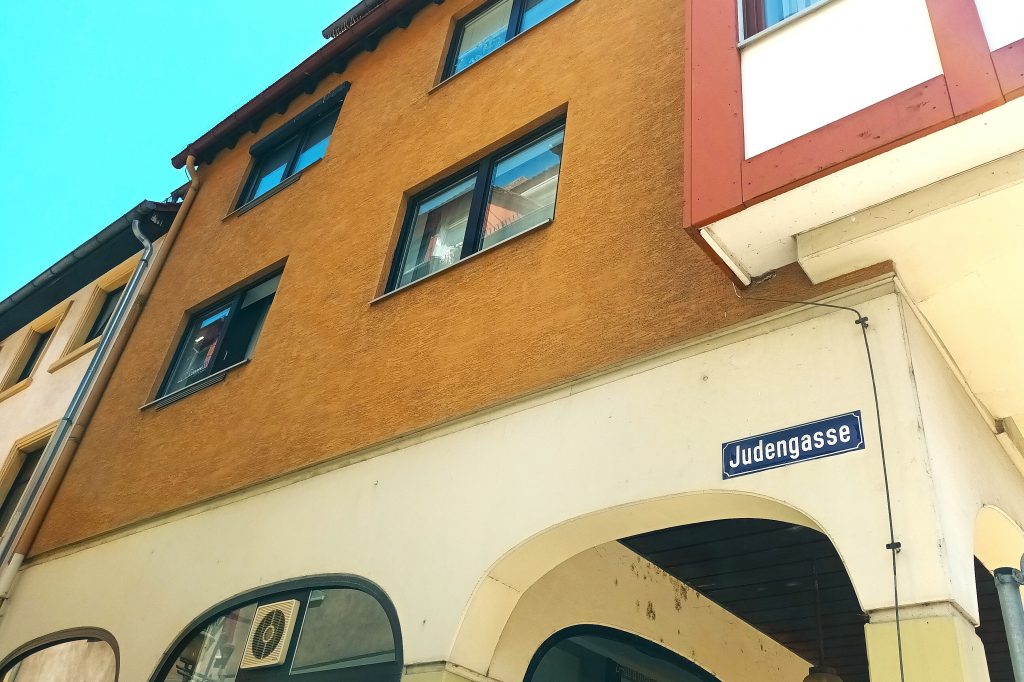
At the beginning, you will see a kindergarten named in honour of Anne Frank. This section of the street is paved with old cobblestones, among which you will also find other types of cobblestones, known as Stolpersteine, marking the places where Jews lived before being deported during the Holocaust.
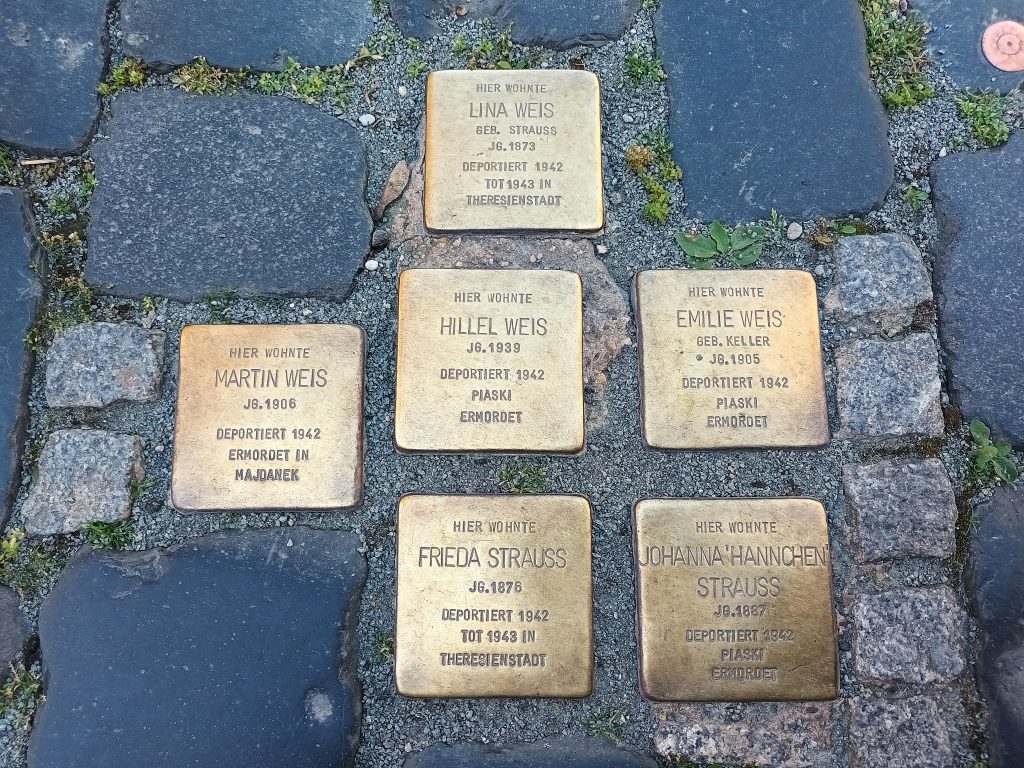
Judengasse leads to the synagogue and the Jewish Museum . Opposite the entrance to the synagogue is a commemorative plaque on a wall marking the site of the Levy Synagogue, which stood here from 1875 to 1947.

Upon entering the museum, visitors are greeted on the right by a video that tells the story of the building and provides a general overview of Jewish rituals.
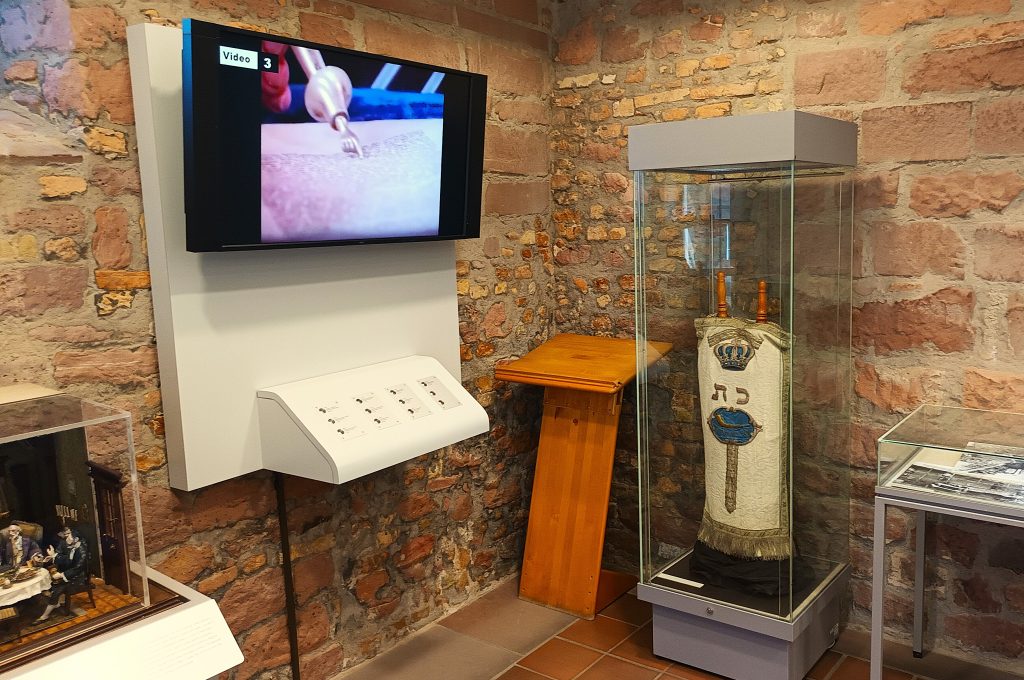
Next to the video is a Sefer Torah. In the same room, visitors can see ancient objects and manuscripts protected by glass cases.
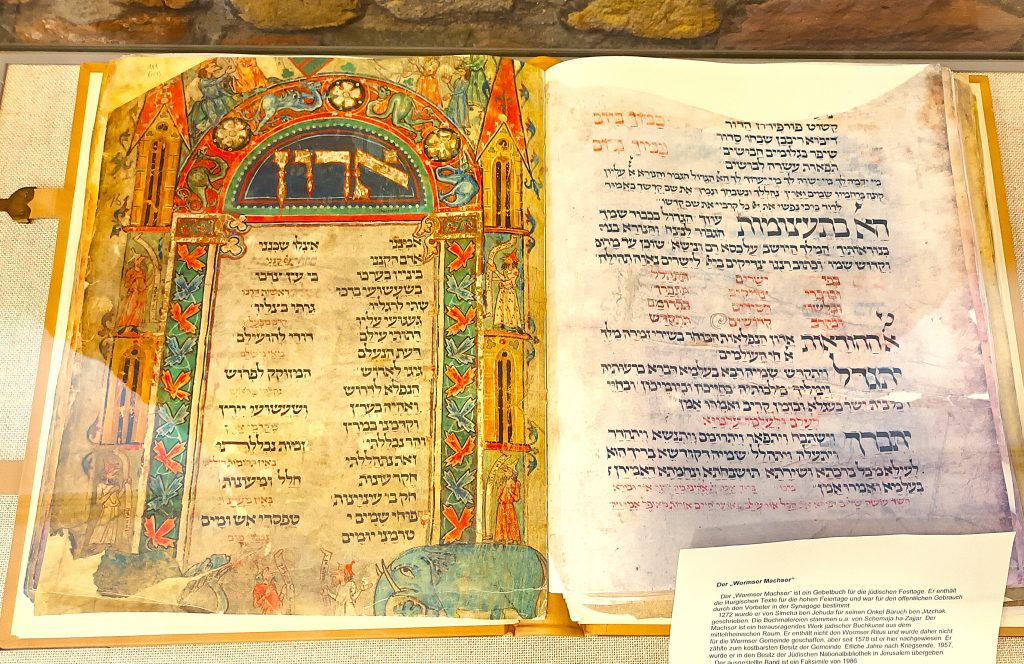
Among these important documents is the famous Mahzor of Worms, a collection of liturgical texts used by the synagogue’s cantor. This mahzor was written in 1272 by Simha Bar Judah. The original version is kept at the National Library of Jerusalem. The one on display at the museum is a reproduction dating from 1986.
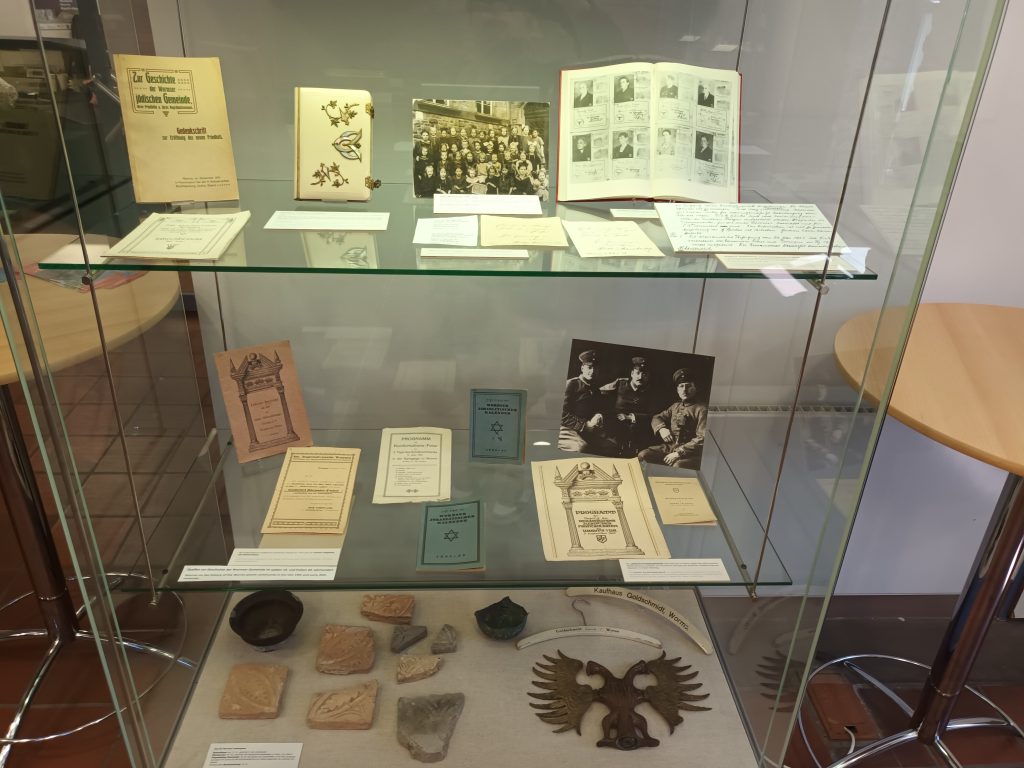
Other objects include books, of course, but also photos of schoolchildren and Jewish soldiers during the First World War. There are also portraits of prominent figures from the community and even coat hangers from the Goldschmidt store in Worms. This was the best-known and largest textile store in Worms, occupying most of the buildings between Domgasse and Hofgasse before the war.

The room on the left consists mainly of panels presenting a wide variety of subjects: the general history of the Jews in the Schum region, the creation of the first Jewish museum by Isidor Kiefer, the celebration of the 900th anniversary of the synagogue in 1934, its reconstruction after the war, and a sideboard with the Hebrew word ‘Zakhor’ , meaning ‘remember’, in whose drawers you can read the biographies of Jews from Worms who were deported during the Holocaust.
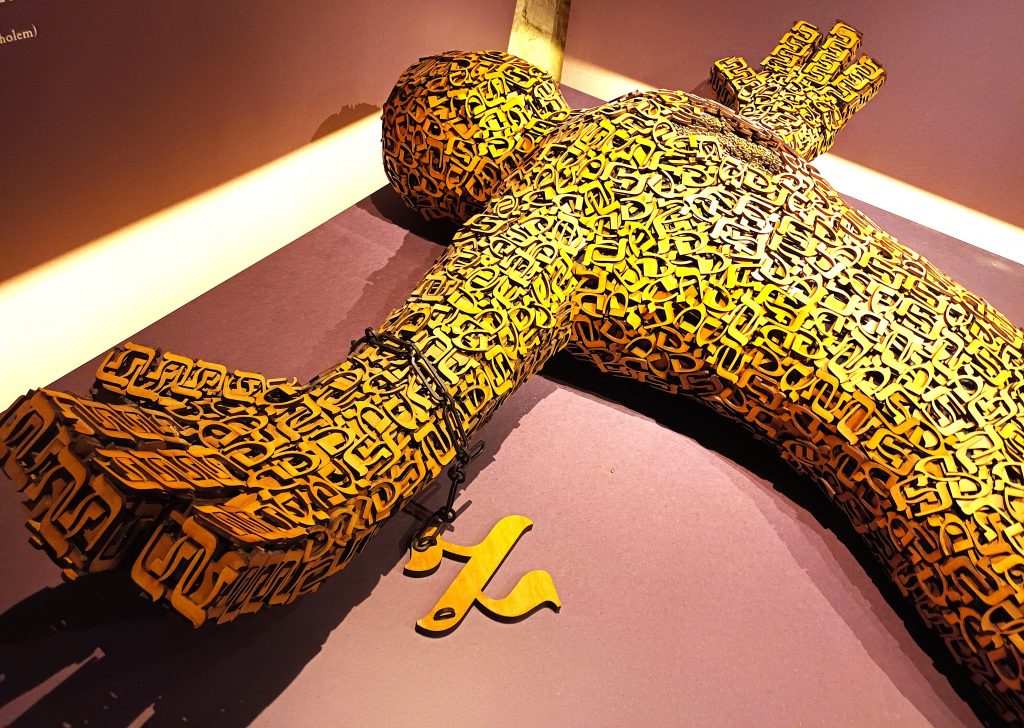
Descending to the basement of the museum, you are welcomed with open arms by a work representing the Golem, created by artist Joshua Abarbanel. Lying with his arms outstretched and the Hebrew letter alef attached to his wrist, the first letter of the word ‘emeth,’ meaning ‘truth,’ which gives the Golem its strength. In search of truth and protection for Jews in the face of threats. This Golem made of letters is reminiscent of the ‘Body of Knowledge’ at Goethe University in Frankfurt, a work that also contains some Hebrew letters.
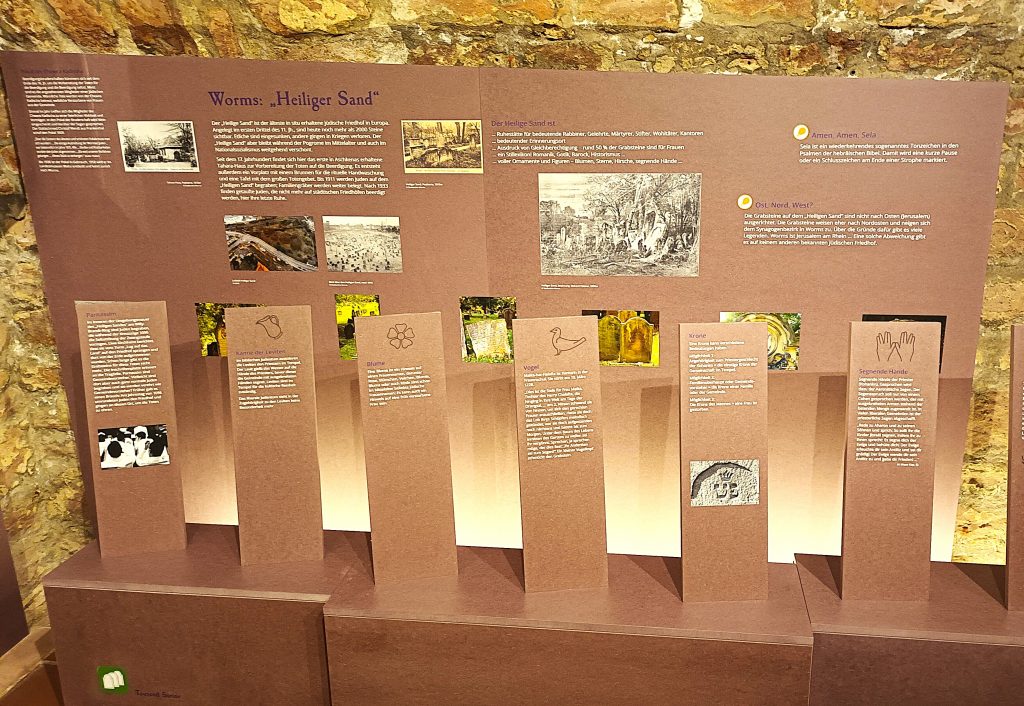
There is also a very interesting presentation of the symbols placed on the graves, including drawings of animals and flowers, and the meaning of each of these symbols. There is also a table listing the French and German cities linked to the thinking of Rashi.
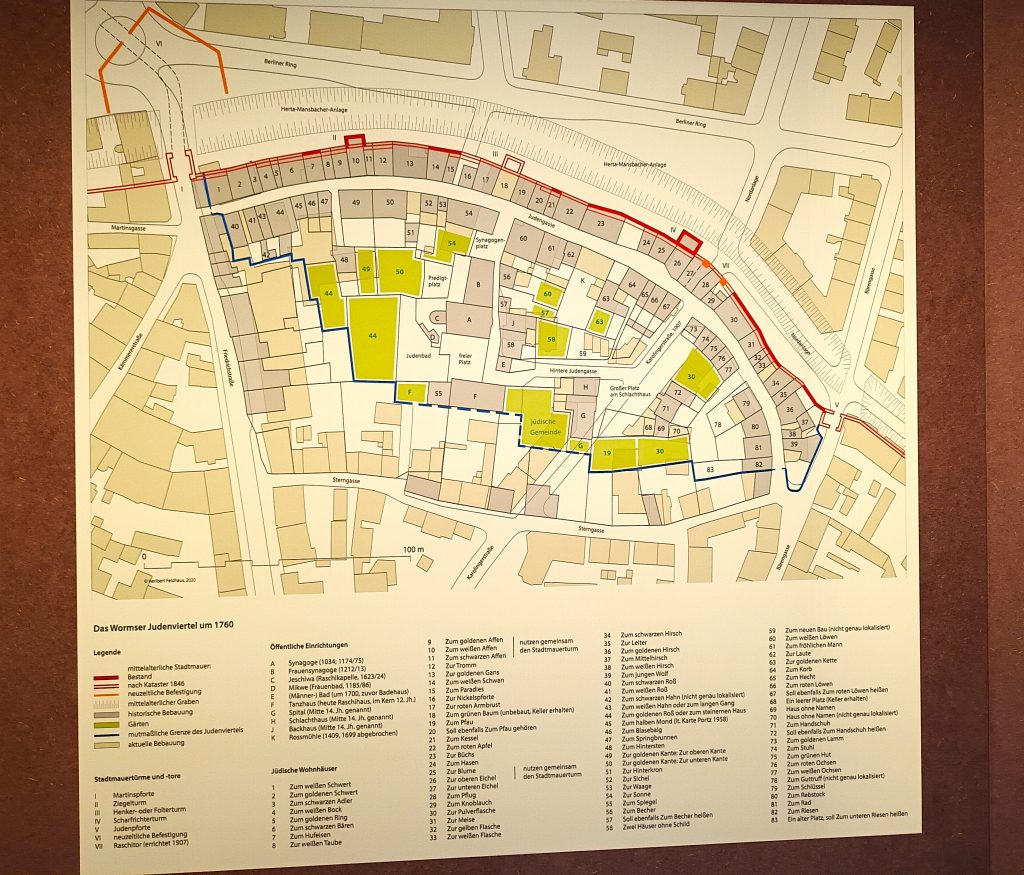
A map of the Judengasse in 1760 has been reconstructed with its dwellings, reminiscent of the Jewish Museum in Frankfurt with its presentation of people’s stories and moments in their lives that we can (re)discover and share. This is an attempt to rehumanise Jewish life, which has been the victim of massacres over the centuries.
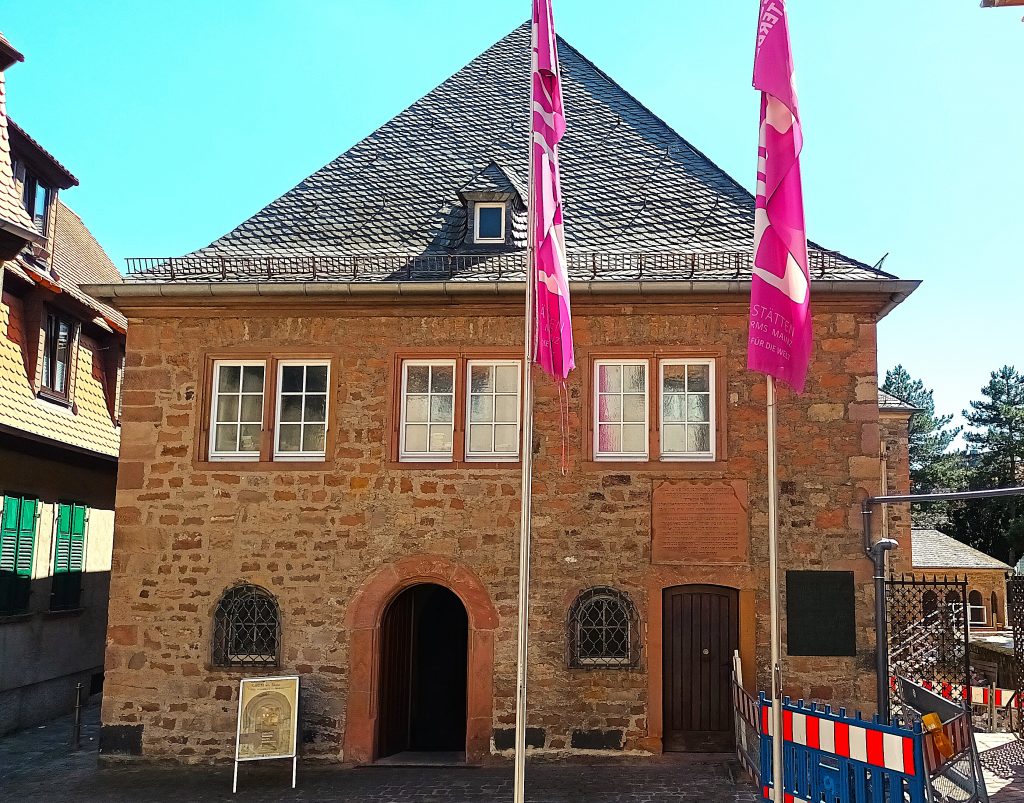
On leaving the museum, you will find the remains of an old well before visiting the synagogue. Restored 1001 times after suffering repeated destruction, it now welcomes tourists.
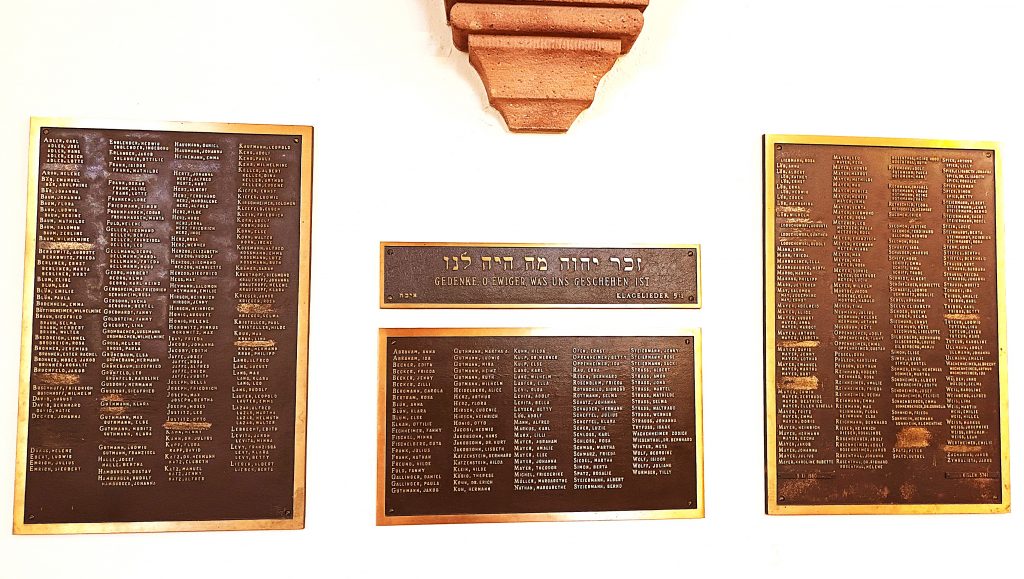
The first room pays tribute to those who have disappeared and displays old objects. The second room, with its benches, menorah, teva and aron illuminated by the light-coloured walls, chandeliers and rays of sunlight streaming through the windows, seems to be waiting for the faithful to return.
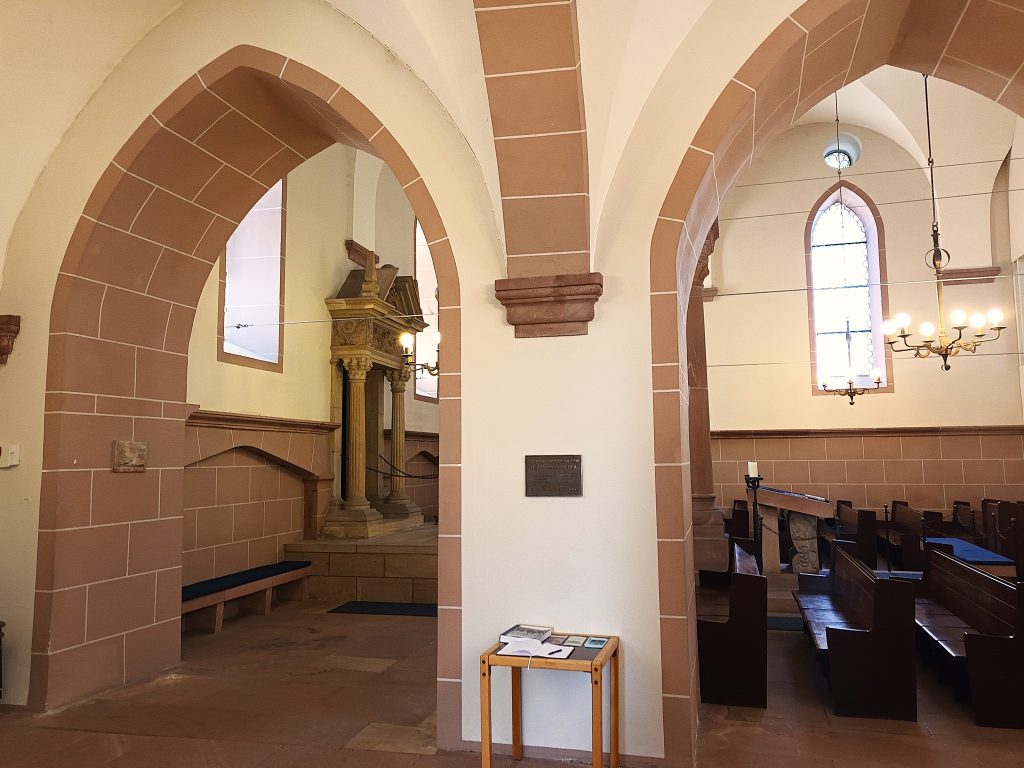
On leaving, to the right of Judengasse, a little further on is another well, and the street leading to the beautiful remains of the city walls, a symbol of present and future protection for the Jews?
